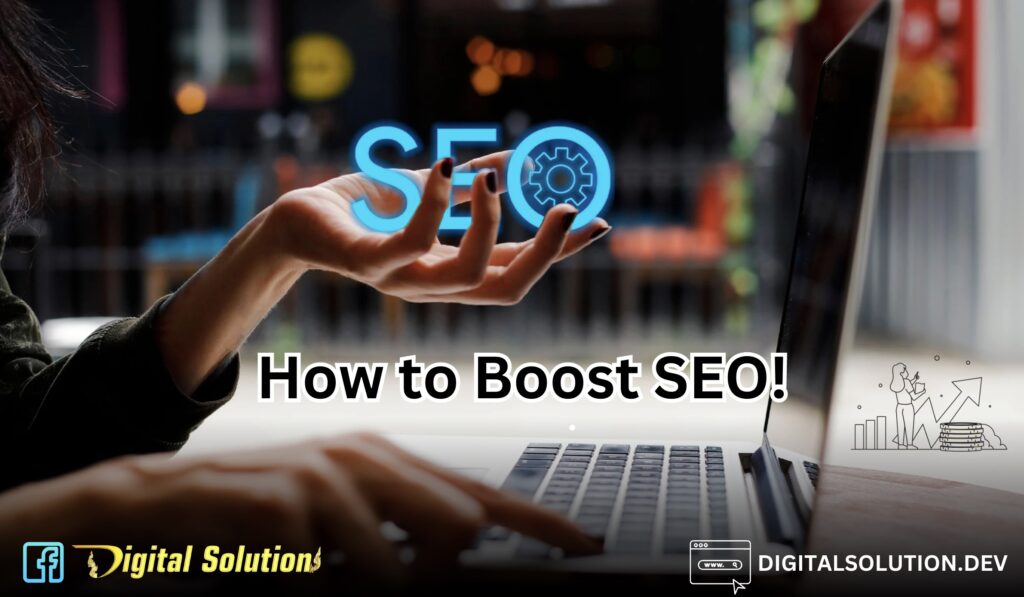Digital Marketing
How to Boost SEO
Boosting SEO (Search Engine Optimization) involves implementing various strategies and techniques to improve your website’s visibility and ranking in search engine results pages. Here are some effective ways to boost SEO:
- Publish High-Quality, Relevant Content: Creating valuable, informative, and well-structured content is crucial for SEO. Focus on producing original content that addresses the needs and interests of your target audience. Use relevant keywords naturally throughout your content to optimize it for search engines.
- Keyword Research: Conduct thorough keyword research to identify the terms and phrases that your target audience is searching for. Use tools like Google Keyword Planner, SEMrush, or Moz Keyword Explorer to discover relevant keywords and their search volumes. Incorporate these keywords into your content, titles, headings, meta tags, and URLs.
- On-Page Optimization: Optimize your website’s on-page elements to improve its SEO. This includes optimizing meta tags (title tags and meta descriptions) with relevant keywords, using descriptive headings (H1, H2, etc.), optimizing image alt tags, and creating user-friendly URLs.
- Mobile-Friendly Website: Ensure that your website is mobile-friendly and responsive. With the increasing use of mobile devices, search engines prioritize mobile-friendly websites in their rankings. Optimize your website’s design, layout, and functionality for seamless mobile browsing.
- Page Loading Speed: Improve your website’s loading speed as it directly impacts user experience and SEO. Compress images, minimize server response time, enable browser caching, and use content delivery networks (CDNs) to enhance loading speed.
- Link Building: Earn high-quality backlinks from reputable and relevant websites. Backlinks are crucial for SEO as search engines consider them as votes of confidence for your website’s authority. Focus on creating engaging content that naturally attracts backlinks. Reach out to influencers, industry publications, or bloggers to request backlinks.
- User Experience: Provide a positive user experience on your website. Make it easy for users to navigate, find information, and engage with your content. Optimize your website’s design, readability, and accessibility to enhance user satisfaction and reduce bounce rates.
- Social Media Integration: Incorporate social media into your SEO strategy. Promote your content on social media platforms to increase its visibility and generate social signals. Engage with your audience, encourage social sharing, and leverage social media to build brand awareness and attract traffic.
- Local SEO: If you have a physical location or serve specific geographic areas, optimize your website for local searches. Claim and optimize your Google My Business listing, include your address and phone number on your website, and ensure consistency in your NAP (name, address, phone number) across online directories.
- Regular Monitoring and Analysis: Monitor your website’s performance using analytics tools like Google Analytics and Google Search Console. Track keyword rankings, traffic sources, user behavior, and other relevant metrics. Analyze the data to identify areas for improvement and make data-driven decisions to refine your SEO strategy.
Remember, SEO is an ongoing process that requires continuous effort, monitoring, and adaptation. It takes time to see results, so be patient and consistent in implementing SEO best practices.
Open this in UX Builder to add and edit content

